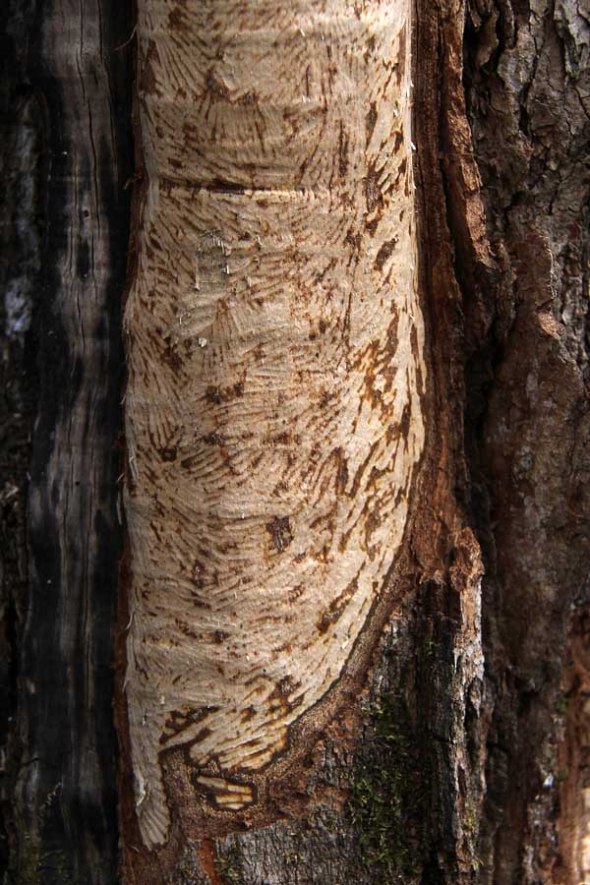Porcupine Feeding Technique
 In the winter, the bulk of a porcupine’s diet is the inner bark, or cambium, of trees. The porcupine removes the outer bark (unless the tree is young or has thin outer bark and then it eats the outer bark as well) in order to reach the cambium layer, which lies directly beneath the outer bark. At this point the exposed surface is very smooth, more finely finished than the work of a beaver. Then the porcupine removes the cambium in small, triangular patches, each patch composed of five or six scrapes converging at one point, like sticks in a tepee. The point where the scrapes meet is where the upper incisors are placed and held fixed against the tree. The lower incisors scrape, making a fresh path with each scrape, as the lower jaw swivels in a narrow arc.
In the winter, the bulk of a porcupine’s diet is the inner bark, or cambium, of trees. The porcupine removes the outer bark (unless the tree is young or has thin outer bark and then it eats the outer bark as well) in order to reach the cambium layer, which lies directly beneath the outer bark. At this point the exposed surface is very smooth, more finely finished than the work of a beaver. Then the porcupine removes the cambium in small, triangular patches, each patch composed of five or six scrapes converging at one point, like sticks in a tepee. The point where the scrapes meet is where the upper incisors are placed and held fixed against the tree. The lower incisors scrape, making a fresh path with each scrape, as the lower jaw swivels in a narrow arc.
Naturally Curious is supported by donations. If you choose to contribute, you may go to http://www.naturallycuriouswithmaryholland.wordpress.com and click on the yellow “donate” button.


















What Other Naturally Curious People Are Saying